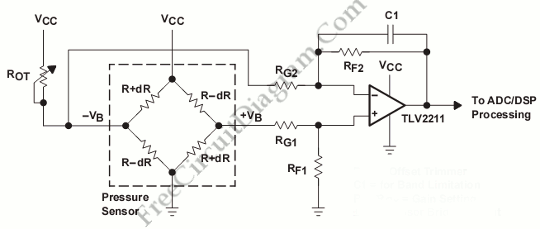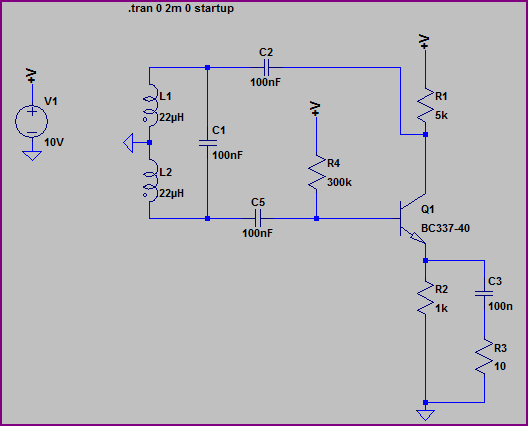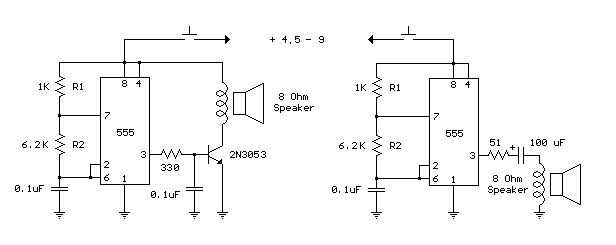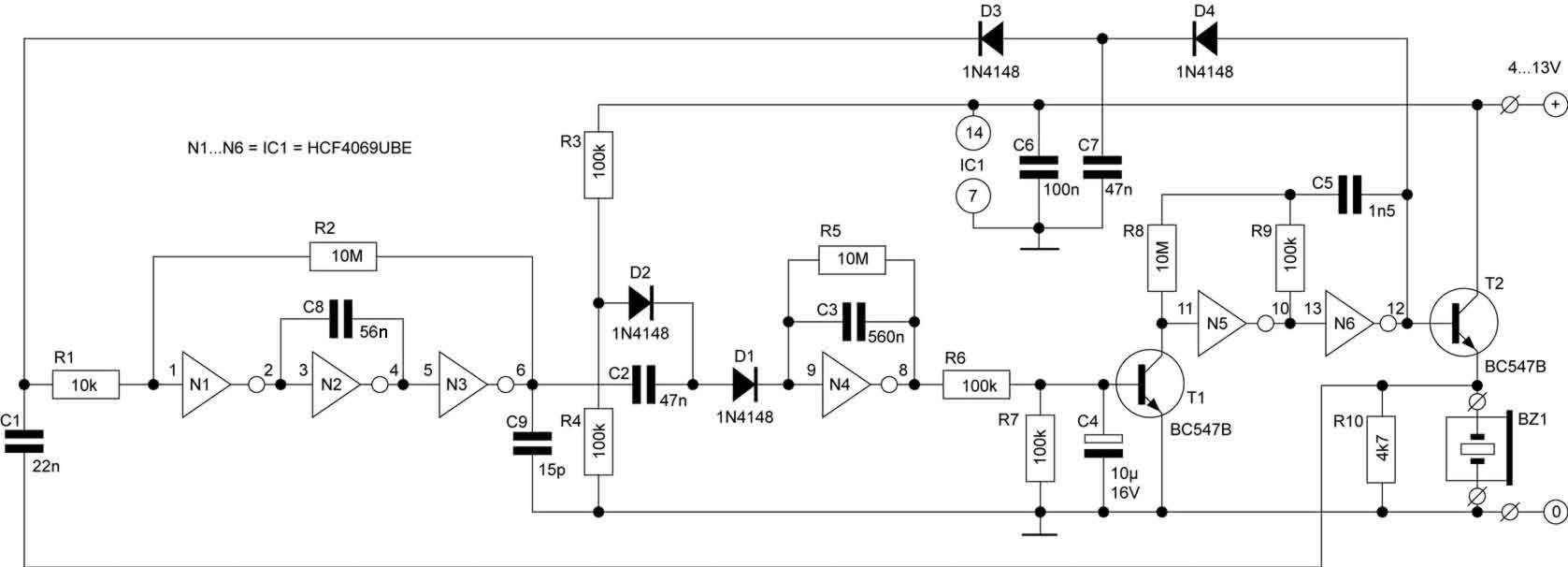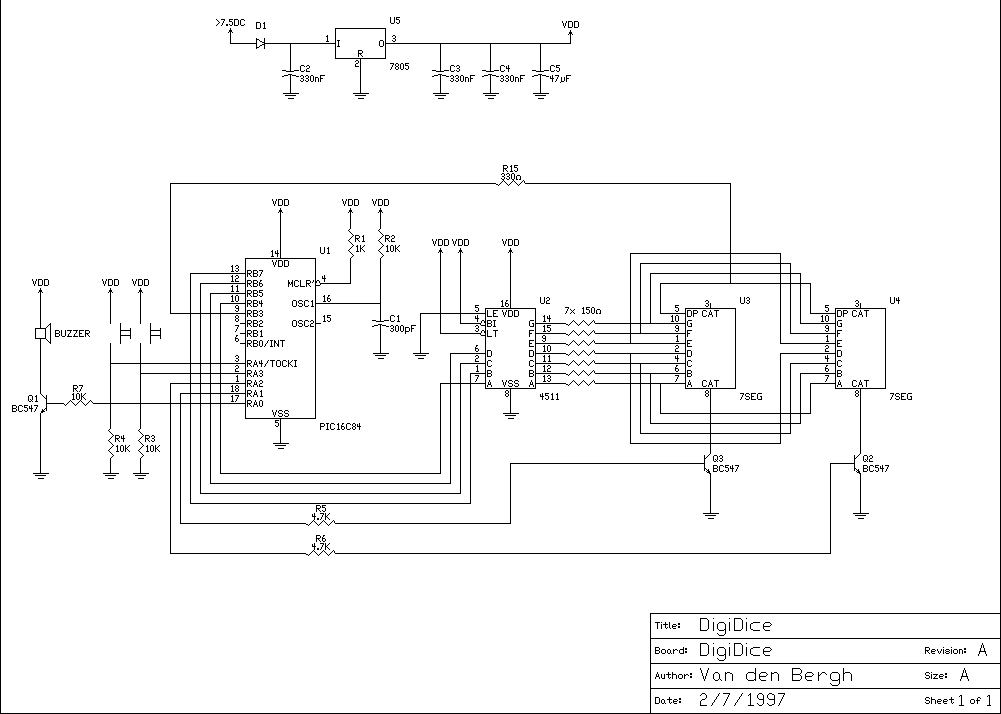
Broadband using negative feedback amplifier circuit
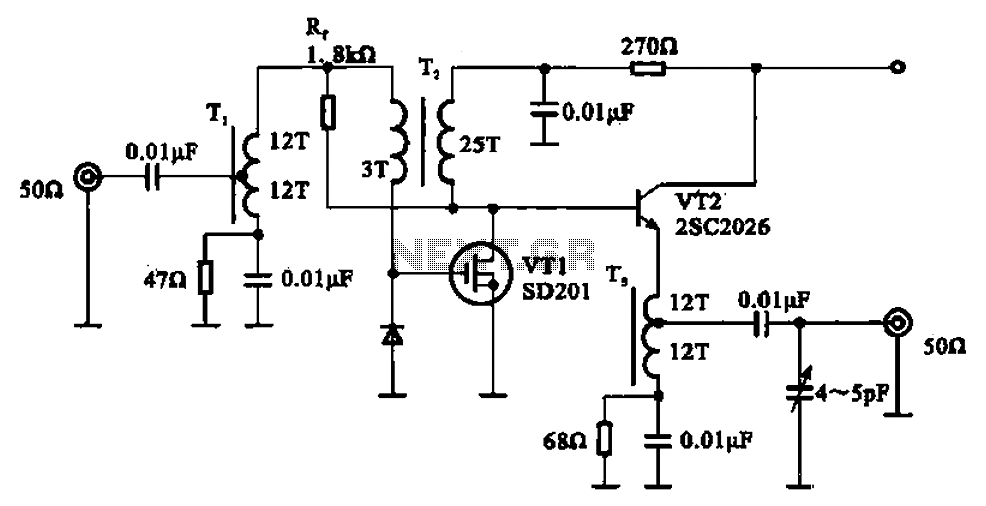
A broadband amplifier circuit utilizing a negative feedback amplifier configuration is presented. This circuit employs transformer coupling and a combination of amplifying sections and field-effect transistors (FETs). The input signal is applied to the center tap of the transformer coupling capacitor windings, which then passes through the primary winding of transformer T2 to the gate of a field-effect transistor. This arrangement serves an impedance conversion function, increasing the input impedance to between 50 ohms and 200 ohms. The secondary winding of transformer T2, connected to transistor VT1, operates under full load, with the gain of the amplifier determined by the secondary winding (with a ratio of 25/3 to 8.33). Transistor VT2 operates in an emitter amplifier configuration, allowing the output impedance to be selected via the coil tap at 5011.
The broadband amplifier circuit described operates on the principles of negative feedback to enhance stability and bandwidth. The circuit's architecture is designed to ensure that the input signal is efficiently transferred through transformer coupling, which provides both impedance matching and isolation between stages. The use of field-effect transistors (FETs) allows for high input impedance and low output impedance, which is advantageous for minimizing signal loss and maximizing gain.
The transformer T2 plays a critical role in the circuit by facilitating the impedance transformation necessary for optimal signal processing. The primary winding receives the input signal, which is then coupled to the gate of the FET, allowing for effective amplification. The design ensures that the input impedance is adjustable between 50 ohms and 200 ohms, accommodating various source and load conditions.
Transistor VT1, connected to the secondary winding of transformer T2, operates under full load conditions, ensuring that the signal is amplified appropriately depending on the gain settings. The gain can be dynamically adjusted, providing flexibility for different applications. The secondary winding's gain is determined by the specific turns ratio, which is critical for achieving the desired amplification levels.
Transistor VT2, configured as an emitter amplifier, serves to further amplify the signal while maintaining a low output impedance. This configuration is essential for driving subsequent stages or loads without significant signal degradation. The output impedance can be fine-tuned through the coil tap at 5011, allowing for customization based on the specific requirements of the circuit or system in which the amplifier is implemented.
Overall, this broadband amplifier circuit exemplifies efficient design principles, utilizing negative feedback, transformer coupling, and FET technology to achieve high performance across a wide frequency range. Broadband using negative feedback amplifier circuit Shown as a negative feedback mode broadband amplifier circuit, the amplifier circuit are used transformer coupling, amplifyi ng section and sub-field effect transistor transistor combination. Circuit, the input signal is applied to the Ti coupling capacitor windings center tap, and then by the primary winding of the transformer T2 is applied to a field effect transistor gate on this way with an impedance conversion function, the input impedance increased to 50 n 200 n, the secondary winding of the transformer Tz group VT1 is very full load, depending on the gain of the amplifier T2 secondary winding (25/3 8,33). VT2 is emitter amplifier mode, the output impedance can be obtained through the coil tap 5011 selection.
The broadband amplifier circuit described operates on the principles of negative feedback to enhance stability and bandwidth. The circuit's architecture is designed to ensure that the input signal is efficiently transferred through transformer coupling, which provides both impedance matching and isolation between stages. The use of field-effect transistors (FETs) allows for high input impedance and low output impedance, which is advantageous for minimizing signal loss and maximizing gain.
The transformer T2 plays a critical role in the circuit by facilitating the impedance transformation necessary for optimal signal processing. The primary winding receives the input signal, which is then coupled to the gate of the FET, allowing for effective amplification. The design ensures that the input impedance is adjustable between 50 ohms and 200 ohms, accommodating various source and load conditions.
Transistor VT1, connected to the secondary winding of transformer T2, operates under full load conditions, ensuring that the signal is amplified appropriately depending on the gain settings. The gain can be dynamically adjusted, providing flexibility for different applications. The secondary winding's gain is determined by the specific turns ratio, which is critical for achieving the desired amplification levels.
Transistor VT2, configured as an emitter amplifier, serves to further amplify the signal while maintaining a low output impedance. This configuration is essential for driving subsequent stages or loads without significant signal degradation. The output impedance can be fine-tuned through the coil tap at 5011, allowing for customization based on the specific requirements of the circuit or system in which the amplifier is implemented.
Overall, this broadband amplifier circuit exemplifies efficient design principles, utilizing negative feedback, transformer coupling, and FET technology to achieve high performance across a wide frequency range. Broadband using negative feedback amplifier circuit Shown as a negative feedback mode broadband amplifier circuit, the amplifier circuit are used transformer coupling, amplifyi ng section and sub-field effect transistor transistor combination. Circuit, the input signal is applied to the Ti coupling capacitor windings center tap, and then by the primary winding of the transformer T2 is applied to a field effect transistor gate on this way with an impedance conversion function, the input impedance increased to 50 n 200 n, the secondary winding of the transformer Tz group VT1 is very full load, depending on the gain of the amplifier T2 secondary winding (25/3 8,33). VT2 is emitter amplifier mode, the output impedance can be obtained through the coil tap 5011 selection.
Warning: include(partials/cookie-banner.php): Failed to open stream: Permission denied in /var/www/html/nextgr/view-circuit.php on line 713
Warning: include(): Failed opening 'partials/cookie-banner.php' for inclusion (include_path='.:/usr/share/php') in /var/www/html/nextgr/view-circuit.php on line 713

